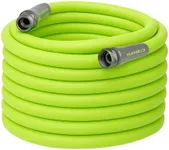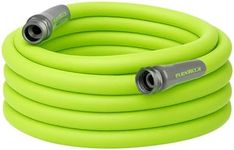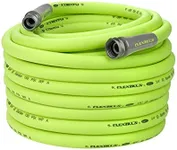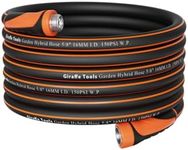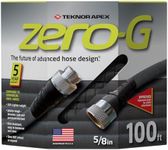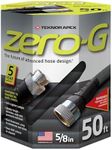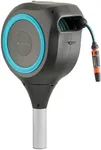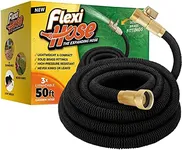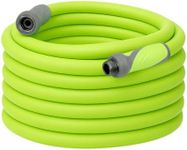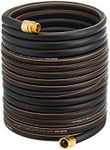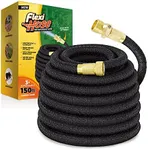Buying Guide for the Best Water Hoses
Choosing the right water hose can make daily tasks like watering your garden, washing a car, or filling a pool much easier. Hoses come in many types, and picking the best one will depend on how, where, and how often you plan to use it. By understanding the essential features and thinking about your needs, you can avoid common problems like kinking, bursting, or struggling to reach far corners of your yard.LengthLength refers to how long the hose is from end to end. It's important because it determines how far you can extend water from your faucet. Hoses usually range from 25 to 100 feet. Shorter hoses (under 50 feet) are easier to store and manage, perfect for small yards or patios. Medium lengths (50 to 75 feet) offer more reach for average homes. Longer hoses (100 feet or more) are best for covering large gardens but can be heavier and harder to handle. Think about the distance from your water source to the furthest spot you need to reach, and choose the shortest hose that covers the distance to minimize tangling and loss of water pressure.
DiameterDiameter means how wide the hose is inside, which affects how much water comes out. Common sizes are 1/2-inch, 5/8-inch, and 3/4-inch. Smaller diameters (1/2-inch) are lighter and easier to handle, best for simple jobs like watering small plants. 5/8-inch hoses are the all-purpose standard, balancing flow and ease of use. Larger 3/4-inch hoses deliver more water faster, useful for tasks like filling pools or washing large equipment but can be heavy. Match the diameter with both the water flow you need and your ability to move the hose comfortably.
MaterialHoses are made from different materials such as vinyl, rubber, or polyurethane. Vinyl hoses are lightweight and affordable but less durable, making them suitable for light, occasional use. Rubber hoses are heavier but offer much better durability and flexibility, perfect for frequent use or in extreme temperatures. Polyurethane hoses are often safe for drinking water and combine flexibility and durability, ideal for people who want both strength and safety. Consider how often you'll use the hose and what kind of weather it will face when selecting the material.
Flexibility and Kink ResistanceFlexibility describes how easily the hose bends and moves without cracking, while kink resistance shows how well the hose avoids bending in a way that blocks water flow. Stiffer hoses are less likely to kink but harder to wind and maneuver. More flexible hoses are easier to use and store but might kink more easily, especially cheaper ones. If you're tired of constantly untangling or unkinking your hose, look for products labeled as 'kink-resistant.' Your preferences and patience level with tangles should guide your choice here.
CouplingsCouplings are the metal or plastic connectors at each end of the hose that attach to the faucet or spray nozzle. Metal fittings, especially brass, are durable and less likely to break or leak than plastic ones, making them a good choice for frequent or heavy-duty use. Plastic couplings are lighter and sometimes easier to twist on and off but may crack over time, especially if left outside. If strength and longevity are important, choose metal; if weight and ease of attachment matter more, plastic may be a reasonable option.
Burst Pressure RatingBurst pressure rating is the maximum water pressure the hose can handle before it might burst. Average garden hoses are rated anywhere from 200 to 600 PSI (pounds per square inch). If you only use your hose for gentle watering, standard ratings are fine. If you sometimes connect the hose to pressure washers or have high water pressure at home, look for hoses with higher burst ratings. Match the hose rating with both your water system and the tools you'll use together with the hose.
